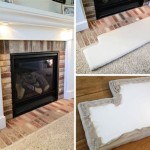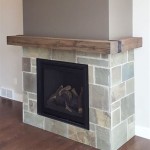Direct Vent Gas Fireplace Fan Kits: Enhancing Efficiency and Comfort
Direct vent gas fireplaces offer a convenient and aesthetically pleasing alternative to traditional wood-burning fireplaces. They efficiently heat a space while requiring minimal maintenance. A significant upgrade that can further enhance the performance of a direct vent gas fireplace is the addition of a fan kit. These kits are designed to circulate the heated air more effectively, improving the fireplace's overall heating efficiency and distributing warmth throughout the room more evenly. This article will explore the benefits, components, installation considerations, and maintenance aspects of direct vent gas fireplace fan kits.
Understanding Direct Vent Gas Fireplaces
Direct vent gas fireplaces are closed combustion systems that draw air from outside the home for combustion and vent exhaust gases directly outdoors through a coaxial pipe. This design eliminates the need for a traditional chimney and significantly reduces the risk of carbon monoxide poisoning. The fire is contained within a sealed unit, typically behind a glass front, which radiates heat into the room. While this radiant heat provides immediate warmth, it can be localized and may not effectively heat larger spaces. This is where a fan kit becomes a valuable addition.
The heat exchanger within the fireplace plays a crucial role in transferring the heat from the burning gas to the air. As this air heats up, it naturally rises due to convection. However, without assistance, this natural convection can be slow and inefficient, resulting in a hot spot directly in front of the fireplace and cooler temperatures further away. A fan kit actively circulates this heated air, pushing it out into the room and promoting a more consistent temperature throughout the space.
The Benefits of Using a Fan Kit
The primary benefit of a direct vent gas fireplace fan kit is improved heating efficiency. By actively circulating the heated air, the fan kit reduces the temperature gradient within the room. This means that the air near the fireplace isn't significantly hotter than the air further away, allowing the thermostat to more accurately reflect the overall room temperature. Consequently, the fireplace cycles on and off less frequently, consuming less gas and saving on heating costs.
Another key advantage is enhanced comfort. A fan kit ensures that the heat is distributed more evenly, eliminating cold spots and creating a more comfortable environment. This is particularly beneficial in larger rooms or in homes with poor insulation. The increased air circulation also helps to prevent the air from becoming stagnant, contributing to better air quality and a fresher feeling in the room.
Fan kits can also offer aesthetic improvements. Some models are designed to be very quiet, minimizing any disruptive noise. Others include adjustable speed controls, allowing users to customize the airflow and noise level to their preference. Furthermore, some fan kits are engineered to be concealed within the fireplace unit, maintaining the clean and aesthetically pleasing appearance of the fireplace.
Key Components of a Direct Vent Gas Fireplace Fan Kit
A typical direct vent gas fireplace fan kit comprises several essential components, each playing a vital role in the overall functionality of the system. Understanding these components is crucial for proper installation and maintenance.
The core of the fan kit is the blower assembly. This usually consists of one or more small fans specifically designed for quiet operation and efficient airflow. These fans are typically powered by a low-voltage AC or DC motor. The blower assembly is strategically positioned within the fireplace unit, often beneath or behind the firebox, to effectively draw in cool air and blow it across the heat exchanger.
A thermostat or thermodisc is a crucial component that automatically activates the fan when the fireplace reaches a certain temperature. This prevents the fan from running unnecessarily when the fireplace is not in use and ensures that the fan only operates when it is actively contributing to heat distribution. The thermostat is typically mounted near the heat exchanger to accurately sense the temperature.
Most fan kits also include a variable speed control, allowing the user to adjust the fan's speed to their desired level. This provides greater control over the airflow and noise level. The speed control is usually a simple dial or switch that adjusts the voltage supplied to the fan motor.
Wiring harnesses and mounting hardware are essential for connecting the various components and securely installing the fan kit within the fireplace unit. These components should be specifically designed for the fireplace model to ensure proper fit and compatibility. Proper grounding is also crucial for safety.
Installation Considerations and Procedures
Installing a direct vent gas fireplace fan kit is a task best left to qualified professionals. While some homeowners with experience in electrical work may attempt a DIY installation, improper installation can be dangerous and may void the fireplace's warranty. A certified technician will have the expertise to safely and correctly install the fan kit, ensuring that it operates efficiently and without posing any safety risks.
Before installation, it is essential to consult the fireplace manufacturer's instructions and the fan kit's installation manual. These documents provide specific guidance on the correct placement of the fan kit within the fireplace unit, wiring connections, and any necessary modifications. Compatibility is key; the fan kit must be specifically designed for the model of the direct vent gas fireplace to ensure proper fit and functionality.
The installation process typically involves disconnecting the power supply to the fireplace, removing any access panels, and carefully positioning the blower assembly within the designated area. The thermostat is then mounted near the heat exchanger, and the wiring harness is connected according to the manufacturer's instructions. The variable speed control is typically mounted on the fireplace's control panel for easy access. Finally, all connections are checked, and the fireplace is reassembled.
During installation, it is crucial to ensure that all wiring is properly insulated and secured to prevent short circuits or electrical hazards. The fan blades should be free from obstructions, and the airflow should not be restricted. Proper grounding is essential to protect against electrical shock. After installation, the fan kit should be tested to ensure that it operates correctly and that the thermostat activates the fan at the appropriate temperature.
Maintaining a Direct Vent Gas Fireplace Fan Kit
Regular maintenance is essential to ensure the long-term performance and reliability of a direct vent gas fireplace fan kit. Neglecting maintenance can lead to decreased efficiency, increased noise, and even premature failure of the fan motor. A few simple maintenance tasks can significantly extend the lifespan of the fan kit and keep it operating at its best.
The most important maintenance task is regular cleaning. Dust and debris can accumulate on the fan blades and motor, reducing airflow and increasing friction. This can cause the fan to overheat and potentially damage the motor. To clean the fan, first, disconnect the power supply to the fireplace. Then, carefully remove the access panel and use a vacuum cleaner or soft brush to remove any dust or debris from the fan blades, motor, and surrounding area. Avoid using water or cleaning solutions, as these can damage the electrical components.
It is also important to periodically check the wiring connections to ensure that they are secure and free from corrosion. Loose or corroded connections can cause the fan to malfunction or even pose a fire hazard. If any loose connections are found, tighten them carefully. If any corrosion is present, clean the connections with a wire brush and apply a corrosion inhibitor.
Listen for any unusual noises coming from the fan motor. A squealing or grinding noise may indicate a worn-out bearing or other internal damage. If such noises are present, the fan motor may need to be replaced. Contact a qualified technician to diagnose the problem and perform the necessary repairs. Attempting to repair the fan motor yourself can be dangerous and may void the warranty.
Finally, periodically check the thermostat to ensure that it is functioning correctly. The fan should activate when the fireplace reaches a certain temperature and should turn off when the temperature drops below that level. If the thermostat is not functioning correctly, it may need to be replaced. Again, consulting a qualified technician is recommended for this task.
Troubleshooting Common Fan Kit Issues
Even with proper installation and maintenance, problems can sometimes arise with a direct vent gas fireplace fan kit. Understanding common issues and their potential solutions can help troubleshoot minor problems and determine when professional assistance is needed.
One common issue is that the fan fails to turn on. This could be due to several factors, including a faulty thermostat, a blown fuse, a loose wiring connection, or a malfunctioning fan motor. First, check the thermostat to ensure that it is properly set. Then, check the fuse to see if it has blown. If the fuse is blown, replace it with a fuse of the same amperage. Next, check all wiring connections to ensure that they are secure. If all of these checks fail to resolve the problem, the fan motor may be defective and require replacement.
Another common issue is that the fan is running too slowly or not producing enough airflow. This could be due to a clogged fan, a weak fan motor, or a low voltage supply. First, clean the fan to remove any dust or debris. Then, check the voltage supplied to the fan motor to ensure that it is within the specified range. If the voltage is low, the power supply may be faulty. If the fan motor is weak, it may need to be replaced.
Excessive noise can also be a problem. This is often caused by loose mounting screws, debris rattling inside the fan housing, or worn-out bearings in the fan motor. Tighten all mounting screws to ensure that the fan is securely attached. Then, check the fan housing for any loose debris and remove it. If the noise persists, the bearings in the fan motor may be worn out, requiring replacement of the motor.
If any of these troubleshooting steps do not resolve the problem, it is best to consult a qualified technician. Attempting to repair complex issues without the necessary expertise can be dangerous and may void the warranty.

Gfk 160a Blower Fan Kit For Majestic Direct Vent Fireplaces

Linear Direct Vent Complete Low Profile Design 35 Fireplace With Blower Fan And Multi Function Remote Drl3535 F4183 F4896

Linear Contemporary Direct Vent Complete 48 Gas Fireplace With Floor Lighting Blower Fan Multi Function Remote Options To See Thru Drl6048 F4847

35 Ruby Traditional Intellifire Touch Direct Vent Fireplace Insert Blower And Remote Electronic Ignition Majestic

H6 Direct Vent Gas Fireplace Ng The Center

Empire Premium Tahoe Direct Vent Gas Fireplace 36 Woodland

Kingsman 42 Zero Clearance Dv Gas Fireplace Hbzdv4228 Us

Linear Contemporary Direct Vent Complete 48 Gas Fireplace With Floor Lighting Blower Fan Multi Function Remote Options To See Thru Drl6048 F4847

Majestic Direct Vent Gas Fireplace Meridian

Majestic 36 Inch Direct Vent Multi Sided Left Corner Gas Fireplace With Intellifire Ignition
Related Posts








